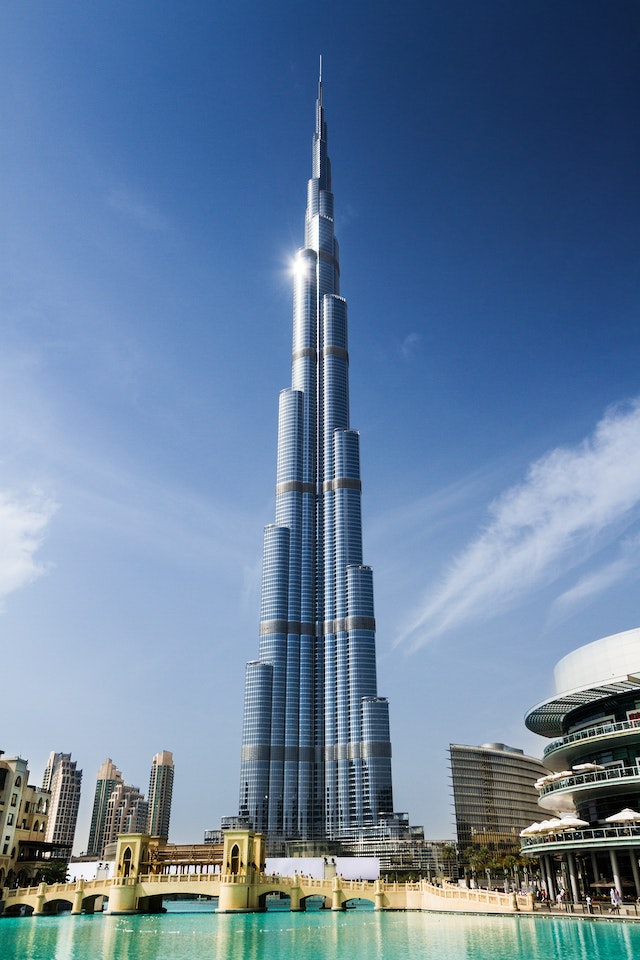Introduction
In modern era, curtain wall systems have emerged as an integral element, revolutionizing how buildings are designed and constructed. This article explores curtain walls’ evolution, components, benefits, and sustainable aspects, shedding light on their pivotal role in contemporary architectural marvels.
Table of Contents
Types of Curtain Wall Systems
In this chapter, we explore the different types of curtain wall systems, including:
- Unitized Curtain Walls: These are pre-fabricated panels assembled off-site and installed on the building’s frame.
- Stick-Built Curtain Walls: These are constructed on-site, with each component individually assembled and installed.
- Semi-Unitized Curtain Walls: A combination of unitized and stick-built methods, offering a balance of efficiency and customization.
Components of Curtain Wall Systems
- Framing Systems: The backbone of any curtain wall, framing systems provide structural integrity. Depending on the project’s requirements, they can be made from different materials, including aluminum, steel, or even timber.
- Glazing: The selection of glazing material is critical, affecting aesthetics and energy efficiency. Common choices include glass, polycarbonate, and composite materials.
- Sealants: Sealants are vital to ensure the weather-tightness of the curtain wall. Silicone sealants are often used due to their durability and flexibility.
- Insulation: Modern curtain walls incorporate insulation to enhance the building’s energy efficiency and climate control.
Benefits of Curtain Wall Systems
- Aesthetic Versatility: Curtain walls offer endless design possibilities, allowing architects to create visually stunning facades.
- Natural Light: The extensive use of glass in curtain walls maximizes raw light penetration, reducing the need for artificial lighting during the day.
- Energy Efficiency: Energy-efficient glazing and insulation reduce heating and cooling costs, making buildings more sustainable.
- Weather Resistance: Properly designed and installed curtain walls provide excellent protection against the elements, enhancing the building’s longevity.
- Acoustic Insulation: Curtain walls can incorporate acoustic insulation, creating a quieter interior environment, especially in urban areas.
- Flexibility: These systems are adaptable and can accommodate structural movements, ensuring the building’s stability.

Sustainability in Curtain Wall Design
In the wake of environmental concerns, sustainable construction practices are gaining prominence. Curtain walls have a significant role to play in this regard:
- Solar Control: Advanced glazing technologies can regulate solar heat gain, reducing the building’s reliance on mechanical cooling systems.
- Thermal Insulation: High-performance insulation materials enhance the curtain wall’s thermal efficiency, reducing energy consumption.
- Recyclability: Many components of curtain walls, such as aluminum frames, can be recycled, reducing the environmental footprint of construction.
- Daylight Harvesting: Optimizing natural light through curtain walls reduces the need for artificial lighting, conserving energy.
Evolution of Curtain Wall Systems
Curtain wall systems have come a long way since their inception in the early 20th century. Initially, they were designed as non-structural cladding, primarily using steel and glass to encase buildings. However, their development has been marked by significant milestones:
Early Curtain Wall Designs
Curtain walls emerged in the early 1900s, primarily for weather protection. These early designs were rudimentary, using steel frames and single-pane glass. While functional, they lacked the aesthetic appeal that modern curtain walls offer.
The Advent of Aluminum Framing
In the mid-20th century, aluminum frames became widespread in curtain wall systems. This change brought several advantages, including increased durability, reduced maintenance, and improved energy efficiency.
Advancements in Glass Technology
Curtain walls saw a significant transformation with the development of advanced glass technologies. Double-glazed and low-E glass became the norm, offering better insulation and energy efficiency. This marked a considerable shift towards sustainability in architectural design.
Integration of Sustainable Practices
Modern curtain wall systems prioritize sustainability. Incorporating photovoltaic glass, shading devices, and energy-efficient materials has instrumental them in achieving green building certifications like LEED and BREEAM.

Design Principles of Curtain Wall
Curtain wall systems are not just functional but also a statement of architectural design. Several vital principles govern their design:
Transparency and Aesthetics
Curtain walls are known for their transparency, allowing ample natural light penetration. Architects carefully balance transparency with aesthetics to create visually appealing facades harmonizing with the surrounding environment.
Structural Integrity
While curtain walls are non-structural, they must withstand various forces, such as wind loads and thermal stress. Engineers ensure the structural integrity of these systems through rigorous calculations and material selection.
Weather Resistance
One of the primary functions of a curtain wall is to protect the building’s interior from external elements. Sealants, gaskets, and drainage systems are integrated to ensure optimal weather resistance.
Thermal Performance
Modern curtain walls are designed to be thermally efficient, helping to regulate indoor temperatures and reduce energy consumption. This is achieved through insulated glass, thermal breaks, and advanced framing materials.
Advantages of Curtain Wall
The popularity of curtain wall systems in contemporary architecture is still strong. These systems offer a plethora of advantages:
Architectural Freedom
Curtain walls provide architects with unparalleled design freedom. They can experiment with various shapes, colors, and textures, creating iconic and unique buildings.
Energy Efficiency
With the integration of energy-efficient materials and design principles, curtain walls reduce energy consumption and lower operational costs for building owners.
Daylighting
The transparency of curtain walls allows for ample natural light, reducing the need for artificial lighting during the day. This not only saves energy but also promotes a healthier indoor environment.
Sustainability
Curtain wall systems play a crucial role in sustainable building practices. They enhance insulation, minimize heat gain, and can incorporate renewable energy generation technologies.
Durability
Thanks to advancements in materials and engineering, modern curtain walls are exceptionally durable and require minimal maintenance over their lifespan.
The Future of Curtain Wall Systems
We look ahead to the future of curtain wall systems. Emerging trends and innovations in materials and technology will be discussed, such as:
- Smart Glass: Integrating intelligent technologies into curtain walls for enhanced energy efficiency and user comfort.
- Sustainable Materials: Advancements in sustainable and recyclable materials will further reduce the environmental footprint of curtain walls.
- Digital Fabrication: How 3D printing and other digital fabrication methods influence curtain wall design and construction.
Iconic Buildings with Curtain Walls
A global tour of iconic buildings showcasing curtain walls’ beauty and functionality. Examples might include:
The Burj Khalifa in Dubai: The world’s tallest building, known for its stunning glass curtain wall.
The Louvre Pyramid in Paris: A modern architectural masterpiece featuring a glass pyramid entrance.
The Apple Campus in Cupertino: A futuristic campus with curved glass walls.
Curtain walls have also influenced how buildings are designed, leading to greater emphasis on sustainability, energy efficiency, and aesthetic appeal. They have enabled architects to push the boundaries of what is possible in building design.

Conclusion
Curtain wall systems have evolved from purely aesthetic elements to integral components of sustainable and energy-efficient modern architecture. Their adaptability, aesthetic versatility, and ability to improve energy efficiency make them indispensable in the construction of iconic buildings around the world. As technology advances, we can only anticipate further innovations in curtain wall systems, enhancing their functionality and sustainability.
Frequently Asked Question(FAQS)
1.What Is a Curtain Wall in Architecture?
A curtain wall is a non-structural external covering of a building composed primarily of glass or other transparent materials.
2. How Do Curtain Walls Differ from Regular Walls?
Curtain walls differ from traditional walls in that they are not load-bearing. They are designed to bear their weight and the environmental forces acting upon them independently, whereas regular walls support the entire building structure.
3. What Are the Advantages of Using Curtain Wall Systems?
Curtain wall systems offer several advantages, including enhanced natural light, energy efficiency, design flexibility, and the ability to create modern, aesthetically pleasing building facades.
4. What Are Common Materials Used in Curtain Wall Construction?
Common materials used in curtain wall construction include glass, aluminum, steel, and composite materials. The choice of material depends on factors like design, energy efficiency, and budget.
5. How Do Curtain Walls Contribute to Building Sustainability?
Curtain walls can enhance a building’s sustainability by maximizing natural daylight, reducing the need for artificial lighting, and improving energy efficiency. They also offer opportunities for incorporating eco-friendly materials and systems.
6. What Are the Maintenance Requirements for Curtain Wall Systems?
Maintaining curtain walls is essential for their long-term performance. Maintenance typically includes regular cleaning, inspection of seals, gaskets, and joints, and addressing any water infiltration or damage issues.
7. Are Curtain Walls Suitable for All Types of Buildings?
Curtain walls are versatile and can be adapted to various building types. They are commonly used in commercial buildings, high-rise towers, museums, and residential structures. The suitability depends on design intent, climate, and budget constraints.
